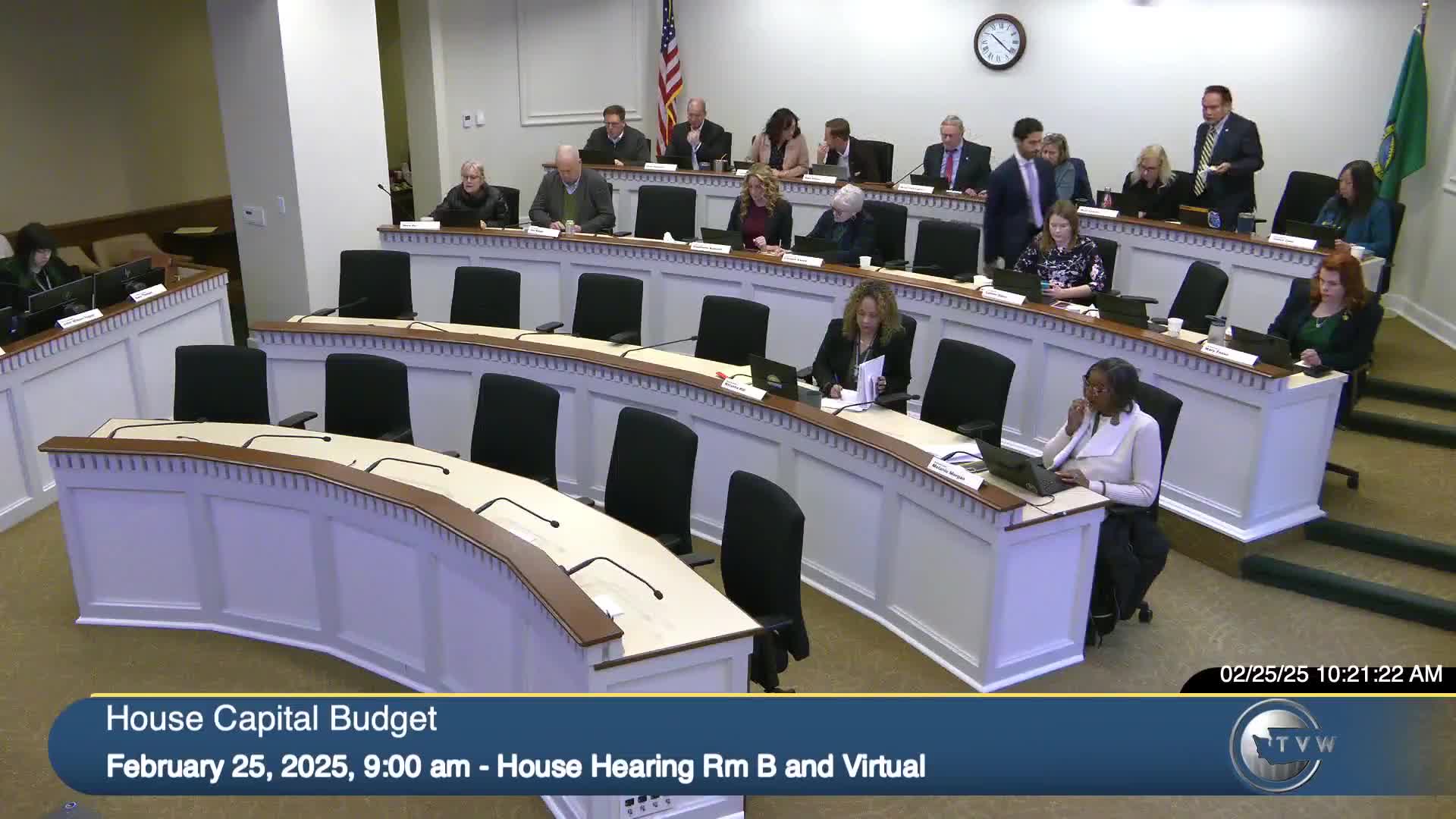Committee briefed on $1.2B federal BEAD package and $280M state match appropriation
February 25, 2025 | Capital Budget, House of Representatives, Legislative Sessions, Washington
This article was created by AI summarizing key points discussed. AI makes mistakes, so for full details and context, please refer to the video of the full meeting. Please report any errors so we can fix them. Report an error »

The Capital Budget Committee on Feb. 25 received a staff briefing and public comment on House Bill 20 16, a financing bill that would provide federal expenditure authority and state matching bonds tied to the Broadband Equity, Access and Deployment (BEAD) program.
Committee staff explained that BEAD is the federal NTIA program created under the Infrastructure Investment and Jobs Act to expand high‑speed internet, and that the program typically requires a 25% nonfederal match for deployment projects. The bill as briefed would appropriate $1.2 billion in federal expenditure authority and $280 million in state general‑obligation bonds to meet match and deployment requirements. Staff said $50 million of the state amount is wrapped into the current biennium funding and the balance represents additional state bonding to meet the match requirement.
Staff explained the bill would direct the State Broadband Office at Commerce to allocate state funding with scoring criteria that include affordability, fair labor practices, speed to deployment, open access, local and tribal coordination, and digital navigation services; Commerce would also set secondary criteria in partnership with those priorities.
Local government and utility stakeholders told the committee the package is critical to covering the 25% match and turning federal BEAD funding into completed networks. Scott Richards of the Washington Public Utility Districts Association said the proposal demonstrates the state’s commitment to build out broadband to unserved and underserved communities. Axel Swanson of the Association of Counties said the $230 million figure included in prior commitments was the amount needed to meet commitments made in the previous capital budget and urged timely action.
A committee member asked about indemnification and the ability of small public entities to carry the required insurance and liabilities for broadband projects; staff said the bill is primarily a financing vehicle and does not address indemnification specifics in the text.
The committee concluded the public hearing after receiving testimony from public‑utility districts, counties and other stakeholders.
Committee staff explained that BEAD is the federal NTIA program created under the Infrastructure Investment and Jobs Act to expand high‑speed internet, and that the program typically requires a 25% nonfederal match for deployment projects. The bill as briefed would appropriate $1.2 billion in federal expenditure authority and $280 million in state general‑obligation bonds to meet match and deployment requirements. Staff said $50 million of the state amount is wrapped into the current biennium funding and the balance represents additional state bonding to meet the match requirement.
Staff explained the bill would direct the State Broadband Office at Commerce to allocate state funding with scoring criteria that include affordability, fair labor practices, speed to deployment, open access, local and tribal coordination, and digital navigation services; Commerce would also set secondary criteria in partnership with those priorities.
Local government and utility stakeholders told the committee the package is critical to covering the 25% match and turning federal BEAD funding into completed networks. Scott Richards of the Washington Public Utility Districts Association said the proposal demonstrates the state’s commitment to build out broadband to unserved and underserved communities. Axel Swanson of the Association of Counties said the $230 million figure included in prior commitments was the amount needed to meet commitments made in the previous capital budget and urged timely action.
A committee member asked about indemnification and the ability of small public entities to carry the required insurance and liabilities for broadband projects; staff said the bill is primarily a financing vehicle and does not address indemnification specifics in the text.
The committee concluded the public hearing after receiving testimony from public‑utility districts, counties and other stakeholders.
View full meeting
This article is based on a recent meeting—watch the full video and explore the complete transcript for deeper insights into the discussion.
View full meeting
